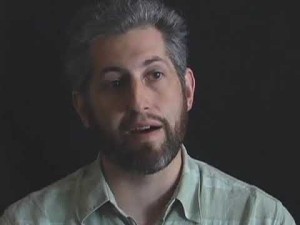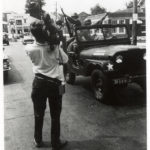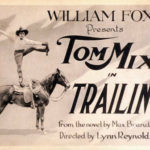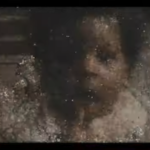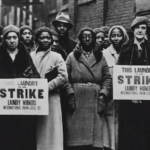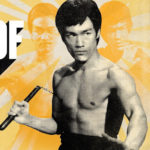Has the Video Essay Arrived?
Publications in both film criticism and academic film studies have historically been in writing, but as affordable lightweight cameras and digital film-editing tools increasingly have put video production into the hands of anyone, that has been changing.
By Peter Monaghan
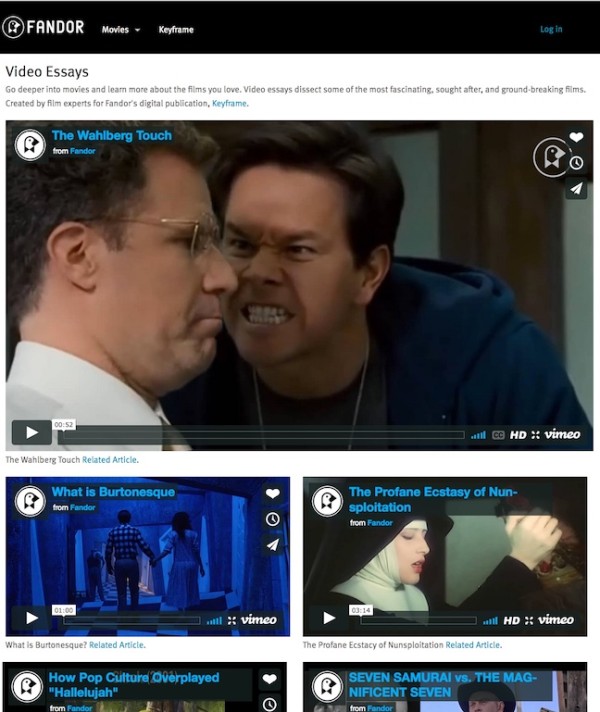 Particularly during the last decade, the audio-visual film essay — film criticism with moving images — has gained traction as an alternative to the written film essay. It has become a quite common form of commentary or reflection on feature films, television programming, and other moving-image works.
Particularly during the last decade, the audio-visual film essay — film criticism with moving images — has gained traction as an alternative to the written film essay. It has become a quite common form of commentary or reflection on feature films, television programming, and other moving-image works.
Among developments that have driven its emergence has been the popularity of fan-created video testimonials to favorite films and television shows.
Audio-visual essays take a variety of forms, but regardless of which variant is deployed, the goal of the emerging nonfiction device is to use visual means to reveal, analyze, and even discover striking aspects of moving-image form and technique. It has shown, for example, that particular filmmakers have characteristic ways of framing images, or use certain visual motifs in particular films.
Typically the essays make their points by using excerpts of existing works. But the approach is still taking shape, so authors have a great deal of freedom to decide how to proceed. Reflecting this fluidity, the audiovisual essay goes by a variety of largely interchangeable names whose definitions and differentiations are not yet fixed: the video essay, the videographic essay, the essay video, the visual essay, the scholarly video, the moving-image essay, the cinematic essay… (For that matter, there is no agreement on the form’s historical origin).
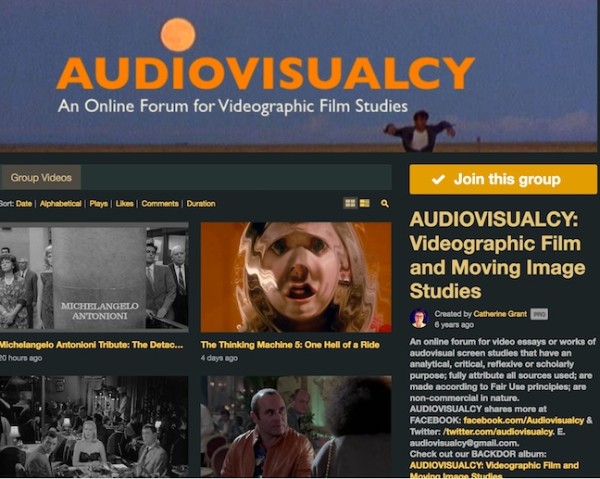 Video essays have become possible as a variety of technological developments have occurred, as Julia Vassilieva, a specialist in film and screen studies at Monash University in Australia, has explained. In the 1970s, frame-by-frame analysis was able to demonstrate fine points of film craft, for example, “nuances of facial expression, degrees of movement, or interplay of light and shadow.” VHS tapes and then DVDs made films accessible to more potential commentators, and also sparked the creation of such added features as commentaries, featurettes, out-takes, and the issuing of various “cuts” of a film, particularly the ones that directors wanted the public to see before studio executives got out their scalpels.
Video essays have become possible as a variety of technological developments have occurred, as Julia Vassilieva, a specialist in film and screen studies at Monash University in Australia, has explained. In the 1970s, frame-by-frame analysis was able to demonstrate fine points of film craft, for example, “nuances of facial expression, degrees of movement, or interplay of light and shadow.” VHS tapes and then DVDs made films accessible to more potential commentators, and also sparked the creation of such added features as commentaries, featurettes, out-takes, and the issuing of various “cuts” of a film, particularly the ones that directors wanted the public to see before studio executives got out their scalpels.
Then, says Vassilieva, came digital video-editing programs “allowing you to dismantle the original footage, even separating images and sound,” so that “it became possible not only to demonstrate and comment on certain features of the film, but to transform it.” Scholars’ and critics’ ability to work in that way with moving images and sounds “led to the development of an innovative performance practice that generates new types of insight.”
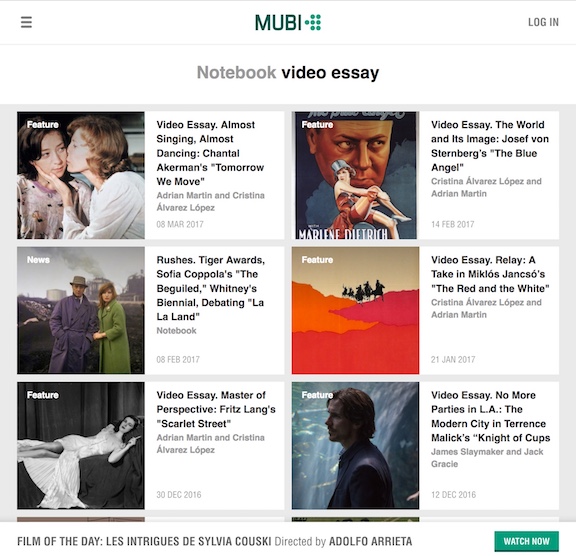 With no necessary restrictions on video essays — on their styles, lengths, critical approaches… — their makers have substantiated their arguments with such techniques as close-ups, freeze frames, slowed sequences, and reordering of footage. They have used video and audio layering, replay, scanning, and much else: voice-over, captions, annotations…
With no necessary restrictions on video essays — on their styles, lengths, critical approaches… — their makers have substantiated their arguments with such techniques as close-ups, freeze frames, slowed sequences, and reordering of footage. They have used video and audio layering, replay, scanning, and much else: voice-over, captions, annotations…
If most video essays run from just a few to several minutes, that probably reflects the likeliest limits, for now, of many potential audience members’ span of ready attention to them; but feature-length examples exist that have received considerable acclaim – for example, Ross Lipman’s experimental, 130-minute “kino-essay,” notfilm. It pores over Samuel Beckett’s only feature film which depicts a sort of notstar played by aging silent-film icon Buster Keaton.
Lipman’s is a quasi- or extended documentary film. But even the simplest, or shortest, of manipulations of film footage can effectively demonstrate aspects of film craft. The contributors to the site, Silent Movie Gifs, for example, often do little more than create GIFs of short segments of silent films, which reveal aspects of montage, thematic development, or other film devices.
Given the form’s infancy, the field is open for “surprising, inventive, and boundary-breaking” contributions, as two seasoned practitioners, Cristina Álvarez López and Adrian Martin, say. Appealing approaches include non-verbal visual essays, which speak — perform — audiovisually as well as ‘essayistically,” as Catherine Grant puts it. One of the most active figures in videographic essay making, Grant, a scholar of film and media studies at the University of Sussex, says effective video-essay forms, “arrived at tentatively, experimentally,” by mixing materials and media, may combine research and art, as she wrote in introducing a selection of audiovisual essays for a December 2016 issue of NECSUS European Journal of Media Studies.
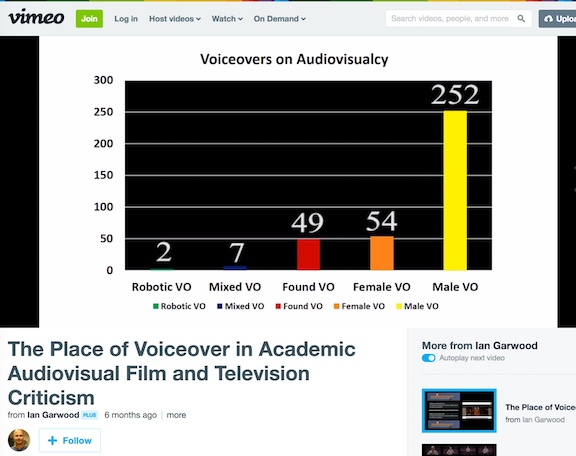 As part of their project of “theorizing” the video essay, even as it takes shape, or shapes, creators of video essays have addressed – sometimes in video essays — many of the potential drawbacks and challenges of the approach. “The Essay Film: Some Thoughts of Discontent,” which the prolific Kevin B. Lee prepared for the British Film Institute’s Sight & Sound Magazine, with an accompanying essay, constitutes a sort of video-essay manifesto for the video essay. See, also, the 20-minute “The Place of Voiceover in Audiovisual Film and Television Criticism,” in which Ian Garwood, from the University of Glasgow, has some fun with the prevalence of male versus female voices in the emerging critical form.
As part of their project of “theorizing” the video essay, even as it takes shape, or shapes, creators of video essays have addressed – sometimes in video essays — many of the potential drawbacks and challenges of the approach. “The Essay Film: Some Thoughts of Discontent,” which the prolific Kevin B. Lee prepared for the British Film Institute’s Sight & Sound Magazine, with an accompanying essay, constitutes a sort of video-essay manifesto for the video essay. See, also, the 20-minute “The Place of Voiceover in Audiovisual Film and Television Criticism,” in which Ian Garwood, from the University of Glasgow, has some fun with the prevalence of male versus female voices in the emerging critical form.
an uncertain academic reception
Academics who begin creating video essays often create works that resemble traditional written critical works, such as academic essays, conference presentations, or journalistic film comments and reviews that have long used photographs or other illustrations. Even the least innovative video essayists, however, often fear that the work will not impress hiring, promotions, and tenure committees.
Providing a credentialing mechanism was one of the key rationales for starting [in]Transition: Journal of Videographic Film and Moving Image Studies, says Jason Mittell, a film and media culture specialist at Middlebury College, in Vermont, and a project manager for the publication. He explains: “In the Internet era it’s not hard to get something published: it’s very easy to post something online. With Vimeo and YouTube, you can publish pretty much any video you’ve made, for free. That’s easy. The hard part is getting the right people to see it, and if you’re an academic, having it be regarded as more than a self-publication.
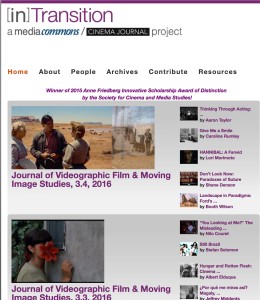 “The way we conceived [in]Transition is: we don’t actually publish videos; we embed videos that are published on Vimeo or YouTube or some other site.” The publication receives submissions, and runs them through a peer-review process, sanctioning them as academically rigorous and original. The publication runs two peer reviews along with each video essay. “That for us is the key value added,” says Mittell, “because the average colleague who is not interested in video essays, and doesn’t really understand why these count — they’re used to writing books and articles — can look at the testament of two hopefully respected academic reviewers who are trying to explain, this is what is important about this video.”
“The way we conceived [in]Transition is: we don’t actually publish videos; we embed videos that are published on Vimeo or YouTube or some other site.” The publication receives submissions, and runs them through a peer-review process, sanctioning them as academically rigorous and original. The publication runs two peer reviews along with each video essay. “That for us is the key value added,” says Mittell, “because the average colleague who is not interested in video essays, and doesn’t really understand why these count — they’re used to writing books and articles — can look at the testament of two hopefully respected academic reviewers who are trying to explain, this is what is important about this video.”
Academics who catch the video-essay bug are often thrilled to find, Mittell says, that “video essays get a lot more engagement from viewers than academic journal articles do,” and from academic and non-academic viewers. (In February 2017, Conor Bateman cautioned video essayists against a trend of dumbing down in search of social-media popularity.) That can lead to frustration with academe’s characteristic slowness to accept new approaches, but videographic essays can shock academic expectations. They tend to be more “performative” than either the “qualitative” traditional written essay or the “quantitative” research papers of social sciences and other measurement-dependent fields, says Catherine Grant, a founding co-editor of [in]Transition, in an essay in NECSUS: European Journal of Media Studies. She argues that video essays can “work as utterances” that add “effective and affective methodological strings to our bow.”
By “performative,” she means that video essays can bring new thinking into being by being what they are — by “performing” new insights. At their best, video essays do that, even if that distinction between performative and qualitative is strained: plenty of qualitative scholarship “performs” — imagines, engages, expands — more than the works analysed.
As theorizing about the video essay proceeds, one danger is that it will take typically academic recourse to prolix, Latinate language. Pioneers are busy formulating protocols, principles, and validation procedures for the form. As they press ahead, they admit to a degree of anxiety about the reception that video essays may get in traditional film studies. Grant concedes that film studies is less advanced in its use of and claims for the videographic essay than the creative arts, film, and design practice.
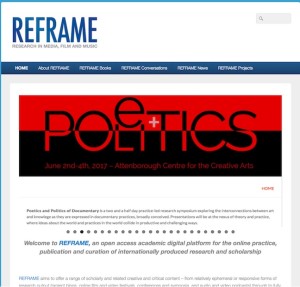 But Grant and others are making progress, as they demonstrated in 2013 at a gathering in Frankfurt, Audiovisual Essay: Practice and Theory International Workshop. There, Grant asked whether the academic audio-visual essay, fostered by the advent of digital publications, can be an ontologically new scholarly form – a new medium of thinking and conveying research findings. Indeed, what is the nature of the “criticism” involved in video essays? asked Vinzenz Hediger, a film-studies scholar at Goethe Universität Frankfurt. He suggested that video essays can reveal the inner senses of film, “a medium that always already contains its own critique.” And one that can evoke “phantom” images in viewers’ minds, as another participant noted. Pursuing those, asked Manu Yáñez Murillo, a Barcelona film critic, “is there a point at which the audiovisual essay ceases to be a work of film criticism?”
But Grant and others are making progress, as they demonstrated in 2013 at a gathering in Frankfurt, Audiovisual Essay: Practice and Theory International Workshop. There, Grant asked whether the academic audio-visual essay, fostered by the advent of digital publications, can be an ontologically new scholarly form – a new medium of thinking and conveying research findings. Indeed, what is the nature of the “criticism” involved in video essays? asked Vinzenz Hediger, a film-studies scholar at Goethe Universität Frankfurt. He suggested that video essays can reveal the inner senses of film, “a medium that always already contains its own critique.” And one that can evoke “phantom” images in viewers’ minds, as another participant noted. Pursuing those, asked Manu Yáñez Murillo, a Barcelona film critic, “is there a point at which the audiovisual essay ceases to be a work of film criticism?”
Whether audiovisual essays resemble rhetorical written essays, or tend towards “the free-associative ways of poetry,” suggested leading video essayists and theorists Cristina Álvarez López and Adrian Martin, “one thing shared by both tendencies is definitely up for renewed scrutiny: the role of editing, in the strong sense of carefully deliberated montage.” They drew attention to what results “when we mix and edit together edits and sounds from often wildly diverse, and differently material, film objects.”
building skills as interest grows
As with any new and appealing approach in the arts, the craft levels of video essayists vary widely. The form will attract more practitioners than skilled ones, and naturally a lot more slavish imitation than innovation. Indeed, says Jason Mittell, some video essayists are cautioning that already the form “may be too formed, now; it may be too stable, and we need to embrace more experimentation.” Early popular video-essay sites, created by film enthusiasts, followed by critics and academics, provided templates. “We’re at a point,” says Mittell, “where video essays are supposed to look like x, versus having a sense of ‘Let’s discover what this can look like.’” For [in]Transition, “we’ve embraced a model of free play, mostly because academics are risk averse. A lot of the first wave of academic-inspired video essays felt to many of us like illustrated lectures, where someone would more or less read a piece as it would be read or spoken in a presentation, and then the video images would go on top of it. I find that a very limiting and unsatisfying way of doing it.”
He and his Middlebury colleague, Christian Keathley, are taking practical steps to raise the level of craft in video-essay making. Since 2015 they have offered summer workshops at the Vermont institution, with funding from the Office of Digital Humanities of the U.S. National Endowment for the Humanities. Keathley, says Mittell, argues that “we need to think about two registers of video work: the explanatory and the poetic… He has really pushed for a poetic dimension.”
They recommend that workshop participants think about the aesthetic effect moving images and sound have had on them, and make video essays that are aesthetic as well as explanatory works. “That’s hard for critics who are used to interpreting, right?,” says Mittell. “But that process is really transformative.”
When videographic-essay makers pull films apart in a video-editing program, to explore how the original objects were made, the video essays can be “not just a mode of expression, of scholarship, but also a mode of research,” he says. Working in that way is “a very tactile experience, in a way that writing often is not. I find myself very interested in the materiality of it, even though it’s obviously all digital, and virtual.”
Certainly many academic video-essay makers are keen to learn what he and Keathley have to say. Mittell says: “For the first round of workshops we did in 2015, we had planned to take 12 people and we got 103 applicants,” ranging from graduate students to professors in their 60s. “That was our first indication that there was great demand among faculty and graduate students.” In June 2017, they will lead a workshop for 15 graduate students, and the following year for 15 faculty members. Many participants have been eager to learn video-essay-making skills so they can impart them to students, to provide them with some relief from preparing only traditional written essays. “Student interest is huge,” say Mittell. (Keathley and Mittell recently released a book, The Videographic Essay: Criticism in Sound & Image, with exercises like those they use at their workshops.)
fair use: fairly safe ground
Among Jason Mittell’s contributions to growing interest in the video essay is a cogent guide to the copyright implications of illustrating video essays with snippets of commercially released films and television shows — or, as is sometimes the case, creating the essays with nothing but clips and still images. He has posted on his blog the guide, which is the draft of one chapter from his and Keathley’s book: “Fair Use for Videographic Criticism.”
He notes that, within the United States, at least, “most videographic criticism falls squarely under the provisions of fair use, allowing you to reuse copyrighted materials without permission, with some important exceptions.” For that, thank Section 107 of the U.S. Copyright Act, on “fair use,” which states that using a copyrighted work is permissible in commentary, criticism, news reporting, and educational uses.
Mittell also notes, however, that “fair use is vague by design, requiring a judgment call (by a judge in court) as to whether [a particular use of copyrighted material] violates copyright law.” Copyright holders, particularly corporations rather than individual filmmakers, might challenge the fairness of a video-essaymaker’s use of material.
Some countries, including the United Kingdom and Australia, don’t even have fair-use provisions, but instead go by a more-grudging concept of “fair dealing.” Mittell notes, however, that video essayists in “fair dealing” countries generally post their work to U.S.-based sites like Vimeo or YouTube. Technically, he says, copyright is tied to where a work is produced, “but once it’s on Vimeo, I don’t believe that, for example, the U.K. authorities would care about it there.”
In any case, he adds, copyright-owning film corporations have lately not often been eager to get into public quarrels over the extent of fair use: it’s bad publicity, and any battle they might lose in court might expand the accepted understanding of fair use.
Still, in the not-too-distant past, conflicts between essayists and copyright holders did erupt – in 2009, YouTube took down Kevin B. Lee’s archive of video essays after Warner Brothers claimed that his use of snippets from Warner-owned films violated copyright. Essays by other videographers have met similar fates, including some that Nelson Carvajal, a Chicago filmmaker, posted on Vimeo only to see taken down in 2013 after objections by the Walt Disney Company. One had attracted nearly half a million views.
Writing about the dispute in Slant Magazine, film editor and former New York Times critic Matt Zoller Seitz objected: “Kevin B. Lee is not Napster; he’s not some guy uploading every frame of every Bette Davis movie for kicks; he’s not even Goldentusk. He’s a critic and scholar doing work that could be considered, at worst, compelling free ads for essential pop art. YouTube, by reflexively siding with whichever party has more money and power, has renounced its founding spirit.”
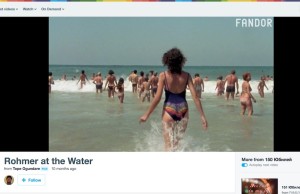
Fandor’s removal in 2017 of hundreds of video essays left them at sea, but Audiovisualcy’s Backdor, a Vimeo group, has returned many to availability.
This year Fandor, a film company that presents films online, and which has been one of the biggest producers and hosts of high-quality video essays, has taken down hundreds of videos, apparently due not to a law suit, but to fear that music used on the postings might attract one. (Some of the works have been reposted elsewhere.)
But on balance, Mittell says, “the average video producer has very little to fear because if you put something on Vimeo and someone flags it as a copyright violation, you can just take it down, and there’s no risk.”
For that reason, some experienced video-essay makers recommend that, unless essayists put their work on a university or college server, they should probably not ask for approval from their institutions’ legal counsels. Mittell writes in his chapter on fair use, posted online: “Institutions tend to be quite risk-averse, so you should know that if you ask your university lawyers or copyright experts if what you are doing is legal, odds are they will say ‘no’.”
Embrace the frisson of lawlessness. Join the ranks of practitioners, and students progressing through the ranks towards academic positions. The advance of he video essay seems unlikely to die back, now.
Video-essay sites and publications
(updated 17 March 2017)
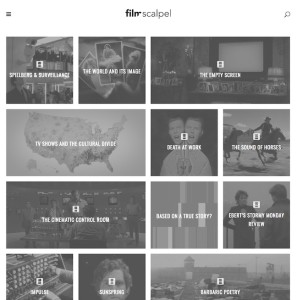 alsolikelife, the website of video essayist Kevin B. Lee.
alsolikelife, the website of video essayist Kevin B. Lee.
Audiovisualcy, an online forum for videographic film studies created by Catherine Grant.
Criterion Collection, a film-reissue specialist, has a section of essays, features, clipping, news, etc., with many video essays.
Critical Commons, a pioneering public media archive and fair-use advocacy network that supports the “transformative reuse” of media in scholarly and creative contexts.
Every Frame a Painting, Tony Zhou and colleagues’ site dedicated to video essays about film form and styles.
Film Krant, a Dutch site that runs some video essays.
Filmanalytical, Catherine Grant’s blog dedicated to video-essay research.
FilmScalpel contends that while discussing movies using words “has distinct advantages (we can use an arsenal of time-tried rhetorical devices to make our point, and rely on language’s familiar patterns to structure our reasoning),” the video essay can do better. Its Filmscalpel Presents is a curated selection of video essays.
Film Studies For Free, Catherine Grant’s web-archive of examples of, links to, and comment on, online, Open Access, film and moving-image studies resources.
In Media Res, a site that demonstrates that the videographic essay is emerging in the midst of a ferment of new approaches to online scholarship, and online media experimentation.
IndieWire has many posts about video essays, discoverable by search.
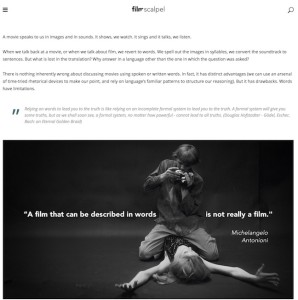 [in]Transition, the first peer-reviewed journal of videographic film studies. The Journal of Videographic Film and Moving Image Studies. A collaboration between MediaCommons and the Society for Cinema and Media Studies’ official publication, CINEMA JOURNAL.
[in]Transition, the first peer-reviewed journal of videographic film studies. The Journal of Videographic Film and Moving Image Studies. A collaboration between MediaCommons and the Society for Cinema and Media Studies’ official publication, CINEMA JOURNAL.
Keyframe, Fandor’s art-film site’s digital publication for video essays and other forms of comment. It has extensive resources, recommended readings, etc.
Museum of the Moving Image has many posts about video essays, discoverable by search.
Notebook, a publication of the online independent-film presenter Mubi, has a site dedicated to video essays.
REFRAME, an open-access academic digital platform for the online practice, publication, and curation of videographic research and scholarship in media, film, and music; has a section dedicated to the audiovisual essay. It also has a section of links to articles about the emerging form and a page of resources for teachers.
RogerEbert.com, the film critic’s site, has video essays (search “essay”).
Books, essays, other resources
The videographic essay – criticism in sound and image, edited by Christian Keathley and Jason Mittell. caboose, 2016
Film studies in motion: From audiovisual essay to academic research video, by Thomas Van den Berg and Miklós Kiss. Scalar, 2016
“How to Make Video Essays: Resources for Teachers and Students,” by Catherine Grant, The Audiovisual Essay
“Teaching the Scholarly Video,” by Christian Keathley, Frames Cinema Journal
“Videographic screen media criticism by female critics, scholars, and artists,” a posting on Film Studies for Free
Previous Post: The Soviet View: A Major Archive Comes Online
Next Post: The Curious Case of the Disappearing Video Archive

